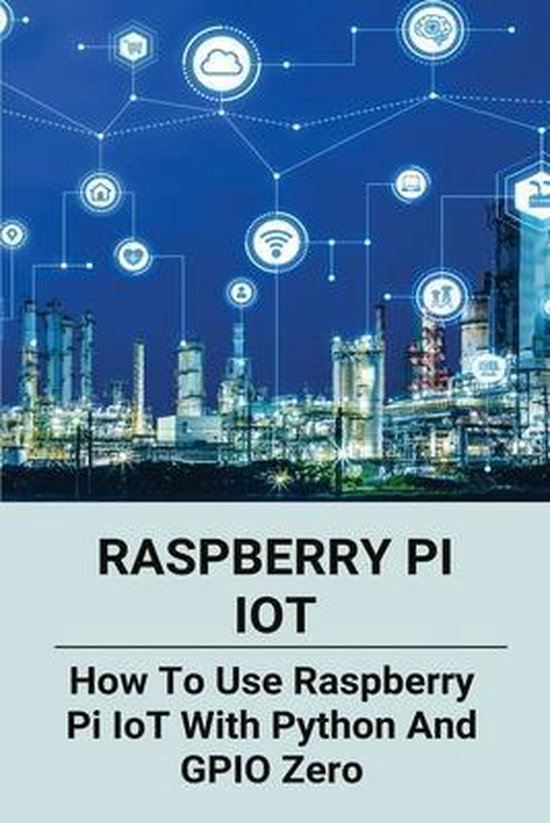Setting up a remote IoT Raspberry Pi system can be an exciting and rewarding project for beginners. With the right guidance, you can create a network of devices that communicate with each other and perform various tasks remotely. Whether you're interested in automating your home or monitoring environmental conditions, this guide will walk you through the process step-by-step.
This article is designed to provide comprehensive instructions on how to configure and deploy jobs to your Raspberry Pi, enabling you to send remote operations to your IoT devices. By following these steps, you'll gain hands-on experience with technologies like AWS IoT and learn how to control various devices from anywhere in the world. Let's dive into the details and explore how to set up your own remote IoT Raspberry Pi system.
Configuring and deploying jobs to your Raspberry Pi allows you to demonstrate how to send remote operations to your IoT devices. In this tutorial, we'll explore the capabilities of AWS IoT Device Management and how it integrates seamlessly with your Raspberry Pi. This setup enables you to manage and monitor your devices effectively, ensuring they operate as intended without physical intervention.
Exploring Remote Operations with AWS IoT
AWS IoT provides robust tools for managing and interacting with IoT devices. By configuring and deploying jobs to your Raspberry Pi, you can execute remote actions such as software updates, configuration changes, and data retrieval. This functionality is essential for maintaining a fleet of IoT devices spread across different locations.
Jobs in AWS IoT are essentially tasks that you define and assign to one or more devices. These tasks can include firmware updates, diagnostic checks, or any custom operation required by your application. The beauty of using AWS IoT lies in its ability to handle large-scale deployments while ensuring secure communication between devices and the cloud.
Throughout this tutorial, you'll learn how to create, schedule, and monitor jobs within the AWS IoT console. Additionally, you'll discover best practices for organizing and tracking job executions, ensuring smooth operations across all connected devices.
Home Automation with Raspberry Pi
Raspberry Pi serves as an excellent platform for home automation projects. From controlling lights and appliances to setting up CCTV systems, the possibilities are endless. By integrating a Raspberry Pi into your home network, you can automate routine tasks and enhance security measures.
In this section, we'll focus on creating a simple yet effective home automation system using a Raspberry Pi. You'll learn how to interface with wireless devices operating at 433MHz frequencies, allowing you to toggle electrical devices on or off remotely. This setup requires minimal hardware and can be expanded to accommodate additional components as needed.
For those interested in expanding their knowledge beyond basic automation, we'll also discuss advanced topics such as integrating sensors and actuators to create a smart home environment. By leveraging open-source software and community resources, you can build a tailored solution that meets your specific requirements.
Remote Debugging with Visual Studio
Developing applications for IoT devices often involves debugging and troubleshooting code remotely. Visual Studio 2015 offers powerful tools for remote debugging, making it easier to identify and resolve issues in real-time. Setting up the remote debugger ensures that your development workflow remains efficient and productive.
The remote debugger should start automatically when your Raspberry Pi boots up. However, if you encounter issues, there are several troubleshooting steps you can take to ensure proper functionality. These include verifying network connectivity, checking firewall settings, and ensuring the correct version of the debugger is installed.
By mastering remote debugging techniques, you'll be better equipped to handle complex projects and maintain high-quality code standards. This section will guide you through the setup process and highlight common pitfalls to avoid, helping you achieve seamless integration between your development environment and target device.
NixOS Deployment for Raspberry Pi Systems
NixOS provides a unique approach to Linux system management, emphasizing reproducibility and declarative configuration. When deploying NixOS on a Raspberry Pi, you gain access to advanced features that simplify system updates and maintenance. This makes it an attractive option for IoT enthusiasts looking to streamline their workflows.
The deployment process involves building the system's top-level closure and copying it to the remote store. Once activated, the new configuration takes effect, and a bootloader entry is added to facilitate future updates. This method ensures consistency across multiple devices and minimizes downtime during upgrades.
As you delve deeper into NixOS, you'll appreciate its flexibility and scalability, making it an ideal choice for managing fleets of Raspberry Pi-based IoT devices. This section will outline the key steps involved in setting up a NixOS environment and highlight its advantages over traditional Linux distributions.
Accessing Raspberry Pi via Remote Desktop
Remote desktop access allows you to interact with your Raspberry Pi from anywhere in the world, provided you have an internet connection. This capability is particularly useful for monitoring and managing IoT devices located in remote locations. By configuring your router and setting up SSH tunnels, you can establish secure connections to your Raspberry Pi.
When accessing your Raspberry Pi remotely, it's important to consider security implications. Port forwarding and SSH configurations must be carefully managed to prevent unauthorized access. Additionally, implementing two-factor authentication and regularly updating passwords adds an extra layer of protection.
In this final section, we'll explore methods for securing your remote connections and optimizing performance. You'll learn how to troubleshoot common issues related to port mapping and network configurations, ensuring reliable access to your Raspberry Pi at all times. By following these guidelines, you'll be well-prepared to manage your IoT devices effectively from anywhere in the world.

